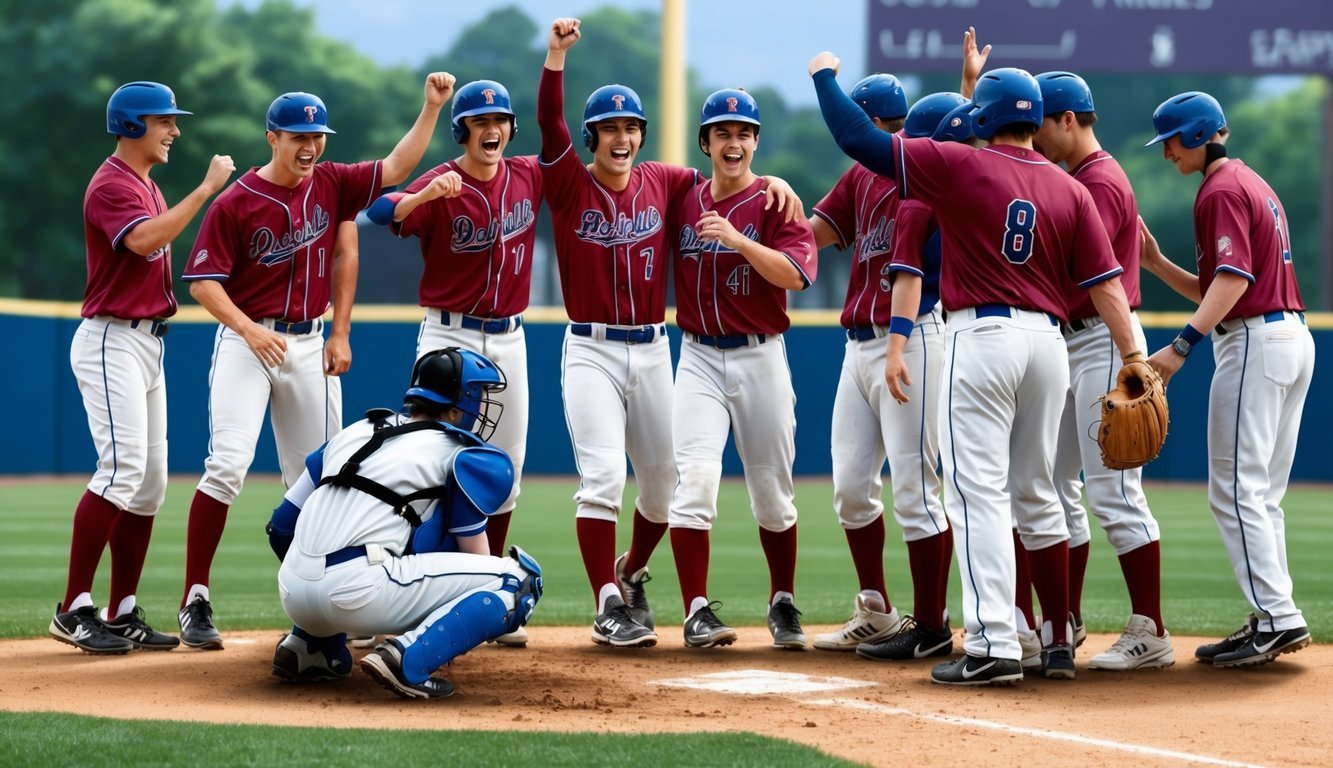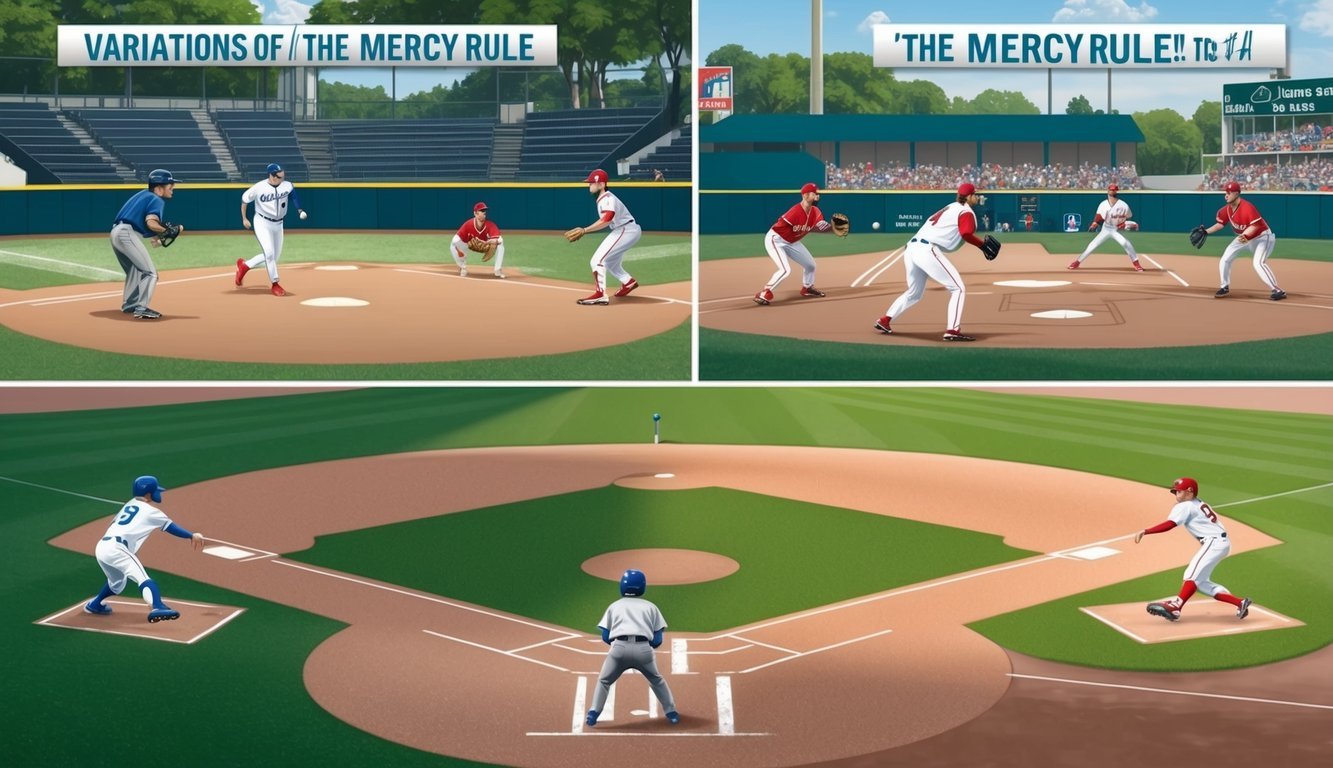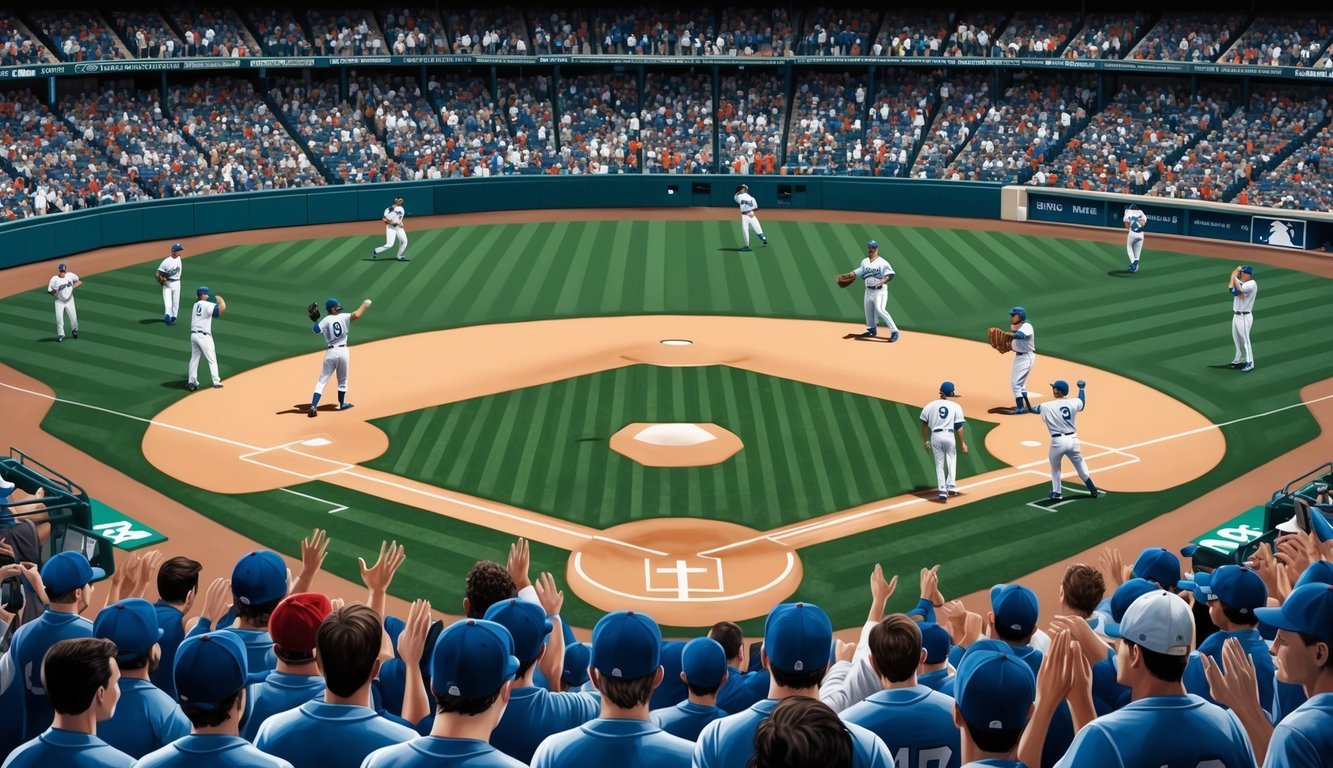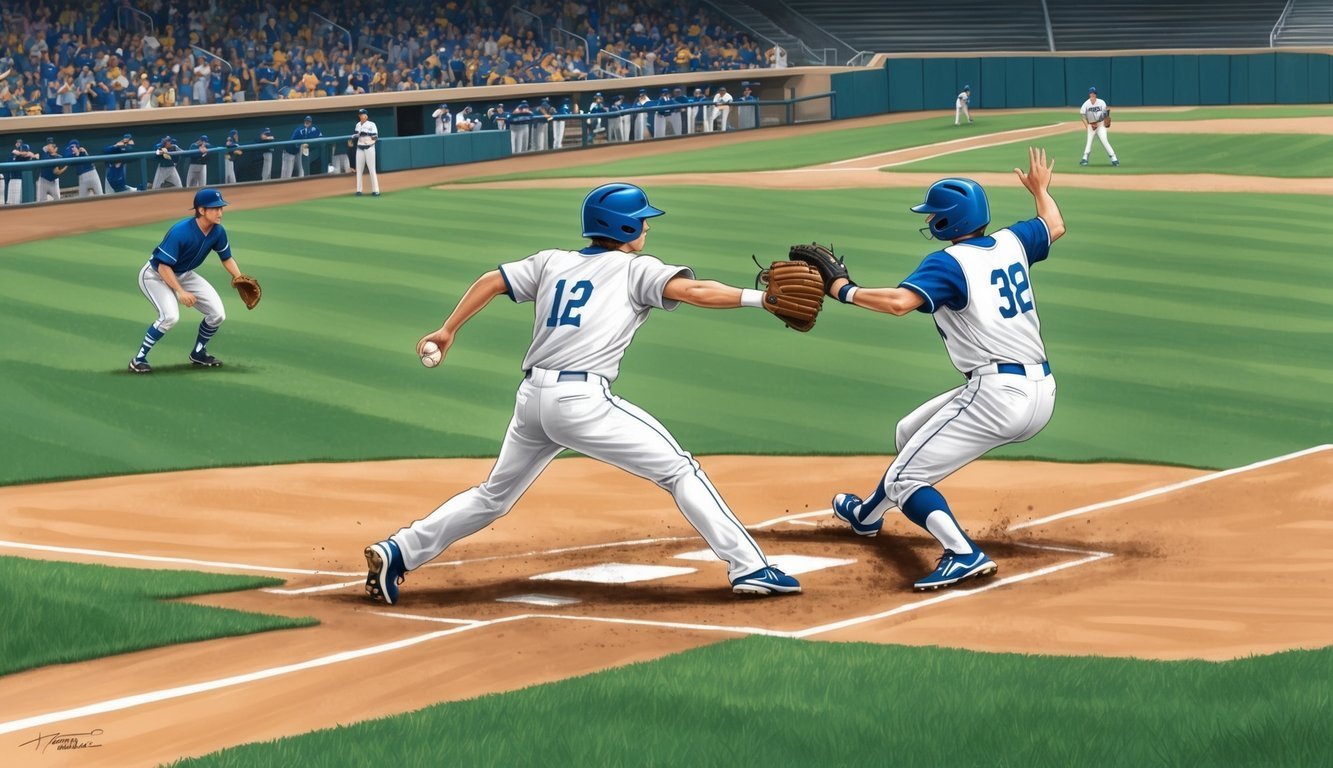Baseball is a game of skill, strategy, and sometimes lopsided scores.
When one team gains a substantial lead, it can lead to frustration and even potential injuries for the losing side.
The mercy rule, a provision designed to end games early in certain situations, can help address this issue.
The mercy rule in baseball ends a game when one team has a large, presumably insurmountable lead over the other.
This rule is common in youth leagues, high school, and some college games, but is not used in professional baseball. It serves to prevent unnecessary prolonging of uneven matches and helps maintain a positive atmosphere for players and spectators alike.
The application of the mercy rule varies depending on the league and level of play.
Some leagues may implement it after 3 or 4 innings, while others wait until the 5th or 6th inning.
The run differential required to invoke the rule can also differ, with some leagues using an 8-run or 15-run threshold instead of the standard 10 runs.
Understanding the Mercy Rule
The mercy rule in baseball aims to prevent lopsided games and promote sportsmanship.
It ends games early when one team has a substantial lead, typically after a certain number of innings.
Historical Background
The mercy rule’s origins trace back to youth baseball leagues in the mid-20th century.
It gained popularity as a way to manage game duration and protect young players’ morale.
Little League Baseball officially adopted the rule in the 1960s.
As the game evolved, the mercy rule became a standard practice, ensuring that games would not become overly lopsided, allowing for a more enjoyable experience for all participants.
This was particularly important during the low scoring baseball era, when teams often struggled to put runs on the board, and blowout games could dampen players’ enthusiasm.
By fostering a spirit of sportsmanship and encouraging competitive balance, the mercy rule has remained a vital component of youth baseball today.
Over time, various leagues and tournaments embraced the concept.
High school, college, and even some professional leagues now use versions of the mercy rule.
The specific parameters often vary by level of play and local regulations.
Main Objectives and Rationale
The mercy rule serves several important purposes in baseball.
It prevents unnecessarily long games when the outcome is clear, saving time and resources.
This is especially helpful in youth leagues with packed schedules.
The rule also promotes fair play and sportsmanship.
It spares losing teams from continued embarrassment and potential demoralization.
For winning teams, it discourages running up the score.
Player safety is another key consideration.
As games become one-sided, fatigue and frustration can increase injury risks.
The mercy rule helps mitigate these concerns.
Application of the Mercy Rule in Baseball
The mercy rule is applied differently across various levels of baseball.
It aims to prevent lopsided scores and maintain a positive playing experience for all participants.
Youth Leagues and Little League Baseball
Little League Baseball widely implements the mercy rule.
Games typically end if a team leads by 10 runs after 4 innings (or 3.5 if the home team is ahead).
Some leagues use a 15-run rule after 3 innings.
Youth leagues often adjust the rule based on age groups.
For 8-10 year-olds, a 15-run lead after 3 innings or a 10-run lead after 4 may end the game.
Older divisions might require more innings before applying the rule.
Coaches can agree to continue playing for fun or practice, even if the mercy rule is met.
This flexibility helps maximize playing time and skill development for young players.
High School and College Baseball
High school baseball generally uses a 10-run mercy rule after 5 innings.
Some states may have variations, like a 15-run rule after 3 innings or a 10-run rule after 4 innings.
College baseball has adopted a similar approach.
NCAA Division I games can end if a team leads by 10 runs after 7 innings.
Division II and III may apply the rule after 5 innings.
Conference games sometimes have different rules.
For example, some conferences might not use a mercy rule for their championship tournaments to maintain competitiveness.
Run differential can impact playoff seedings in high school and college, so some teams may opt to continue playing even if the mercy rule is in effect.
Implications for Players and Teams

The mercy rule in baseball significantly impacts players and teams beyond just ending games early.
It shapes the overall experience and development of athletes while promoting a safer playing environment.
Sportsmanship and Player Development
The mercy rule fosters good sportsmanship by preventing overly lopsided scores.
Players on the winning team learn humility and respect for their opponents.
They focus on improving their skills rather than running up the score.
For the losing team, it minimizes demoralization and keeps players engaged.
Coaches use mercy rule situations as teaching moments.
They may rotate positions, allowing less experienced players more field time.
This approach develops a well-rounded team and boosts morale.
Players learn to stay positive and support teammates, even in challenging circumstances.
The rule also encourages teams to play their best from the start.
Knowing a game could end early pushes players to perform well in early innings.
Safety and Prevention of Injuries
Baseball can be physically demanding, especially for young players.
The mercy rule helps reduce the risk of injuries by limiting extended play in uneven matchups.
Pitchers benefit most, as it prevents overuse of their arms in prolonged games.
Fatigue-related injuries decrease when games don’t drag on unnecessarily.
Players on both teams are less likely to lose focus or become frustrated, which can lead to accidents on the field.
The rule also protects players’ mental well-being.
Avoiding extreme score disparities helps maintain confidence and enthusiasm for the sport.
This psychological safety is crucial for long-term player retention and enjoyment of baseball.
Variations of the Rule across Leagues

The mercy rule in baseball varies widely depending on the level of play and specific league regulations.
These differences affect when games end early and how large a lead is required to invoke the rule.
Different Run Limits and Innings
In Little League baseball, the mercy rule often kicks in when a team leads by 10 runs after 4 innings (or 3.5 if the home team is ahead).
Some youth leagues use a 15-run rule for even earlier game endings.
High school baseball typically enforces the 10-run rule after 5 innings.
College baseball has its own twist, with a 10-run rule after 7 innings in many conferences.
These variations aim to balance game length, player development, and sportsmanship.
Shorter games in youth leagues help maintain interest and prevent fatigue.
Stricter rules in higher levels reflect the increased skill and competitiveness.
Professional Leagues and Tournaments
Major League Baseball doesn’t use a mercy rule in regular season games.
However, some minor leagues have adopted it to manage game times and pitcher workloads.
The World Baseball Classic employs a unique approach:
- 10-run lead after 7 innings
- 15-run lead after 5 innings
This format allows for competitive play while preventing extremely lopsided scores in international competition.
Some independent leagues experiment with their own versions to keep games exciting and manageable.
Cultural and Ethical Considerations

The mercy rule in baseball sparks debates about competition, sportsmanship, and cultural values.
It raises questions about balancing fairness with tradition and how different societies view lopsided games.
The Debate over Competition and Compassion
Some argue that the mercy rule protects players from humiliation in blowout games.
It can shield young athletes from emotional distress and maintain their enthusiasm for the sport.
Others contend that it robs teams of valuable playing time and learning opportunities.
They believe facing adversity builds character and resilience.
Coaches often struggle with this balance.
Do they push for every run or ease up to avoid embarrassing opponents?
The rule also impacts spectators.
Some fans enjoy high-scoring games, while others find lopsided matches boring or unsportsmanlike.
Global Perspectives on the Mercy Rule
Different cultures view the mercy rule through varied lenses.
In Japan, the rule is widely accepted as it aligns with values of harmony and respect.
American baseball tends to emphasize competition more strongly.
This can lead to resistance against mercy rules, especially at higher levels of play.
European leagues often implement mercy rules to promote fair play and sportsmanship.
They see it as a way to keep games fun and engaging for all participants.
Youth leagues worldwide increasingly adopt mercy rules.
This trend reflects growing concerns about children’s emotional well-being in competitive sports.
